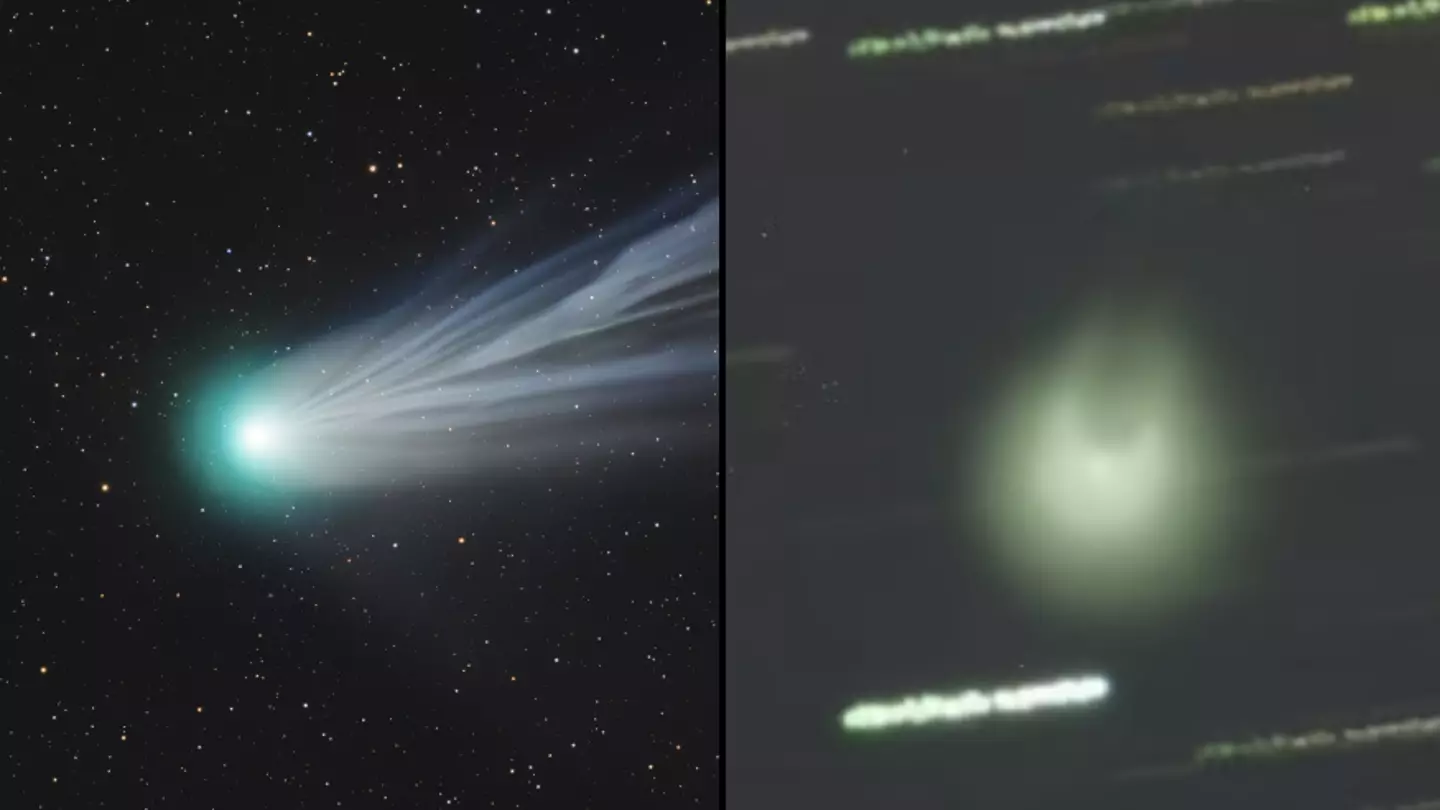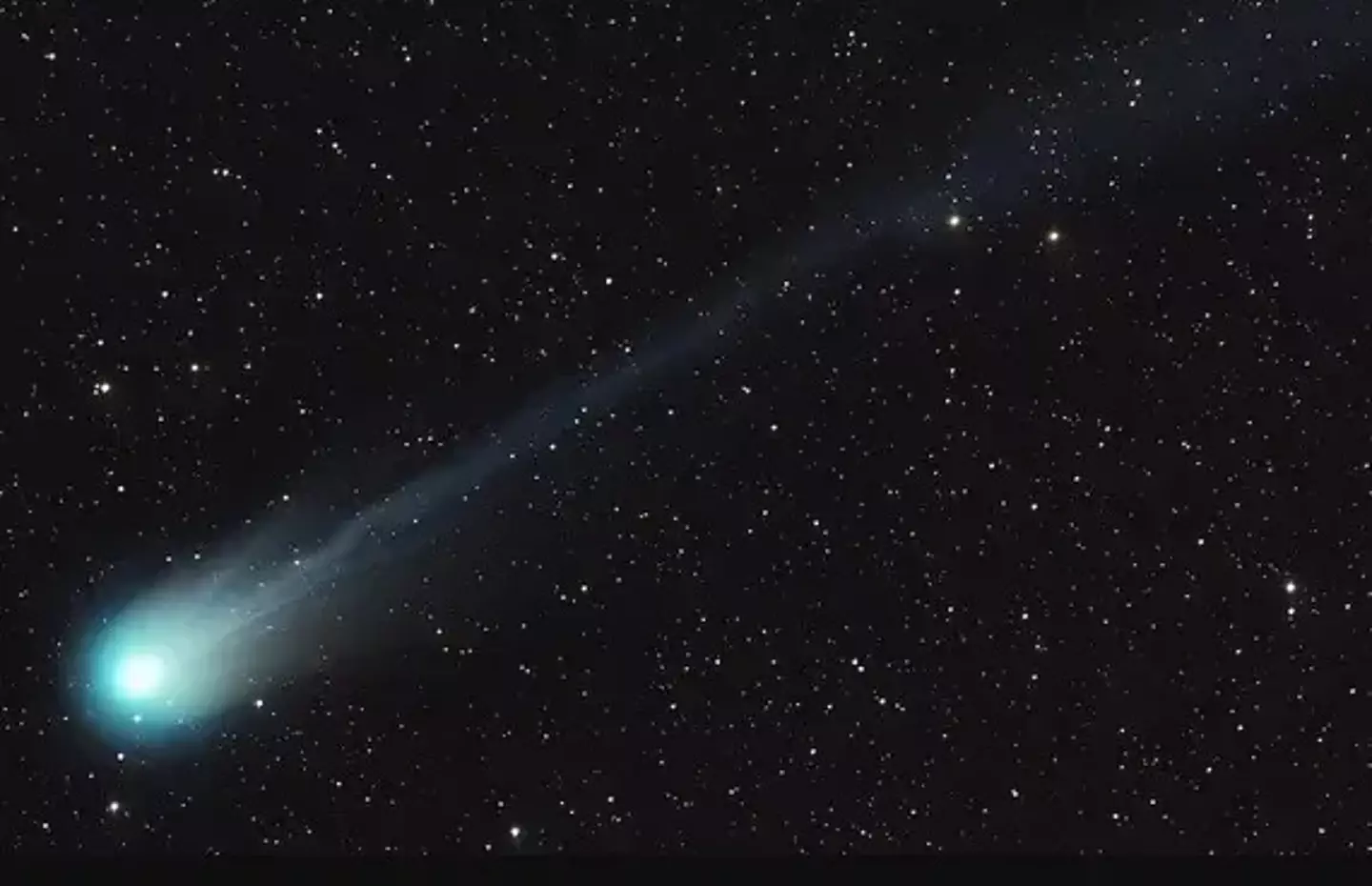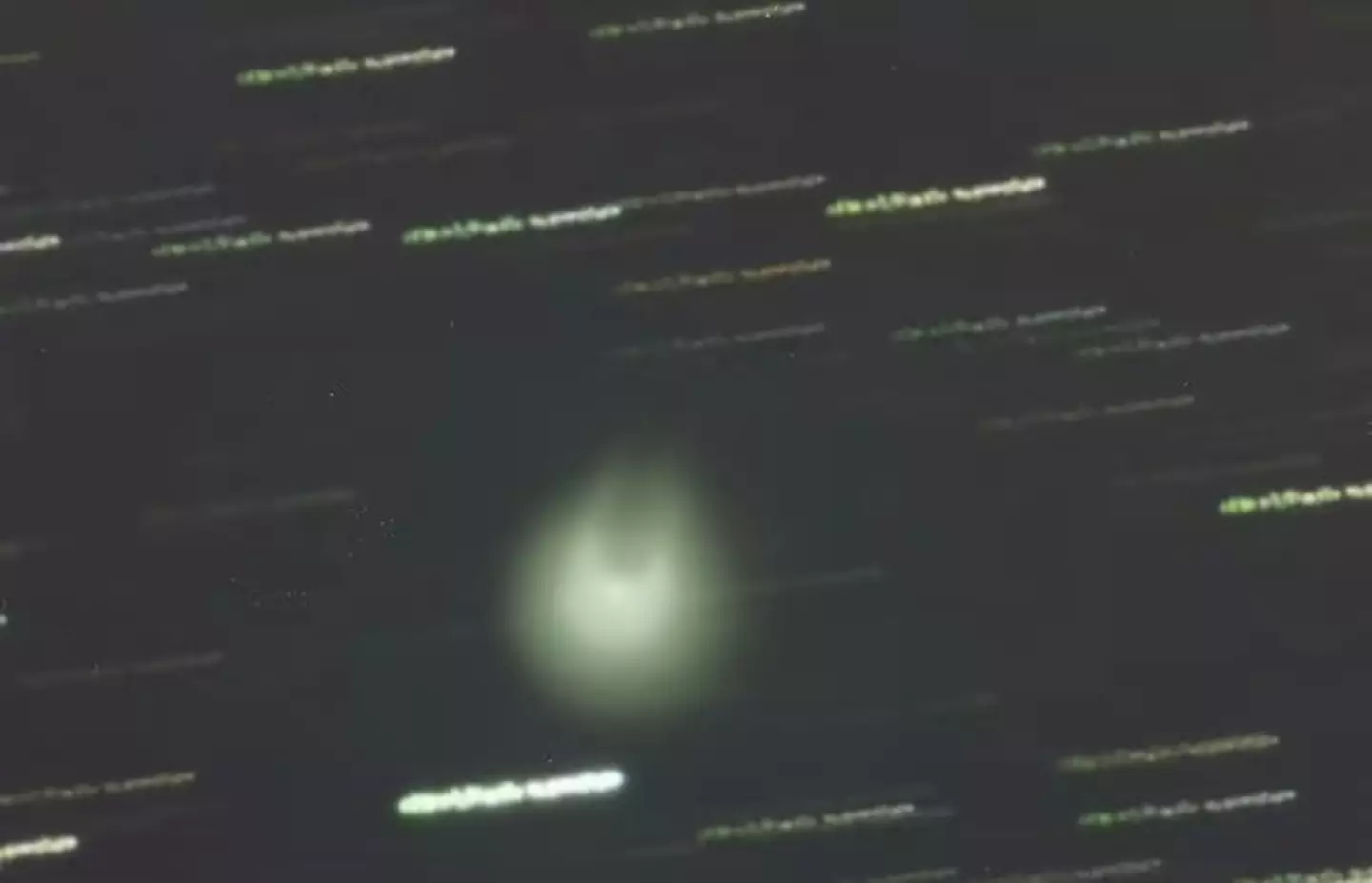
The sky is putting on a right show at the moment for us earthlings.
Ahead of the total solar eclipse, which is due to plunge North America into darkness next week, a green comet - which makes Mount Everest look like the size of a small hill - will be hurtling past us later tonight (4 April).
People in the northern hemisphere will be able to catch a glimpse of Comet 12P/Pons–Brooks, which has been dubbed the 'Mother of Dragons', shooting through the night sky in early April.
Advert
So, although we won't be able to see total darkness replacing the sunlight next Monday (8 April), luckily, Brits will be able to witness this extraordinary spectacle in the sky later this evening.
What do the 'Mother of Dragons' comet look like?
Astronomers have said we need to keep an eye out for a green blob with a hazy tail - hence it's nickname - as it ventures to the inner solar system for the first time in a whopping 71 years.
Advert
In October last year, experts realised that 12P/Pons-Brooks (or 12P for short) had exploded in space for the second time in just four months.
The nucleus of the city-sized celestial object is filled with a mix of ice, dust and gas, known as cryomagma.
Its centre is also surrounded by a cloud of gas known as its coma, which is growing brighter and brighter as it makes it's way towards the UK.
Why is it called 'Mother of Dragons'?
When solar radiation warms up its internal components, the pressure begins to build up as the heat causes the ice to melt straight to gas and eventually triggers an explosion.
Advert
The icy elements then shoot out into space through cracks in the nucleus' shell, which gives the comet it's distinctive features - as it was previously dubbed the 'devil comet' due to it looking as though it had horns.
But this time around, Brits will be chasing the dragon as 12P's frequent eruptions over the last few months left scientists scrambling to come up with a new nickname.

It was dubbed the 'Mother of Dragons' by researchers at the European Space Agency who reckon that it could be the parent body of the kappa-Draconids meteor shower, which is active throughout the final months each year.
Advert
As well as this, it looks green due to the presence of a molecule called dicarbon - which radiates an emerald glow when exposed to sunlight - so the dragon vibe all makes a lot of sense, really.
The comet will tonight be visible for the first time since 1954 - so you're going to want to be well prepared for this once-in-a-lifetime experience.
What time can I see the 'Mother of Dragons' comet?
According to Gregory Brown, an astronomer at the Royal Observatory Greenwich, 12P may be visible to the naked eye.
Advert
He told the Daily Mail: "The comet can now be found in the constellation of Aries which is visible in the early evening, over in the west. It will only become visible after twilight and sets by around 10pm BST.
"While it may be possible to see with the unaided eye, it is best to try and observe with a pair of binoculars or a small telescope."
Where can I see the 'Mother of Dragons' comet?
Brown went on to say we should look out for an 'irregularly shaped dirty snowball' flying overhead, while also comparing it's appearance to a faint star-like blob with a green tint and a tail.
Scientists say sky gazers should be looking in the west-northwest direction, just above the horizon, to see the Mother of Dragons comet, which should show up somewhere north of the Great Square of Pegasus constellation.

It is currently getting closer and closer to the sun and the Earth, but it will be right on our doorstep by the end of April.
It will be just 72.5 million miles (116.8 million km) from the big ball of fire in the sky by 21 April, while it will be 144 million miles (232 million km) from our planet on 2 June.
But fellow astronomer Jessica Lee says it will be too late to see it in the northern hemisphere by this time.
She added: "From June onwards, after the comet has passed the sun, it will only be visible to observers in the southern hemisphere.
"It will grow fainter and fainter again as it travels towards the outer solar system and won't approach the Earth again until 2095."
Featured Image Credit: James Peirce/Creative Common/Juan Lacruz/Wikipedia commonsTopics: Space, Science, News, UK News, World News